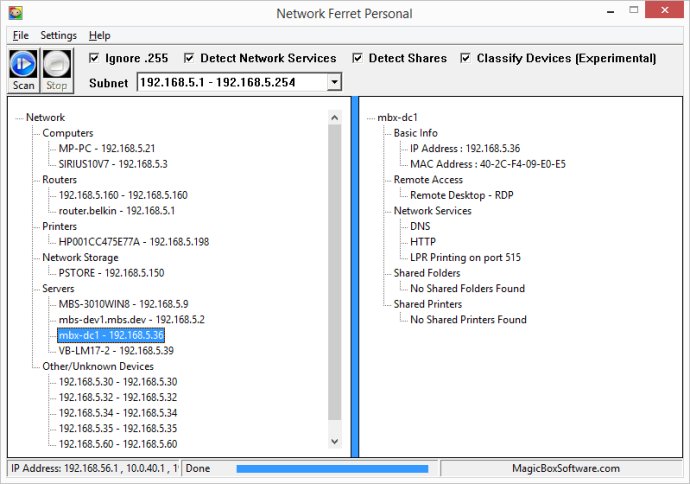Network Ferret is a network scanning software with simple user interface. It focuses on detecting, connecting, and monitoring devices on a network without overwhelming users with complex settings. It allows users to focus on their tasks and not the software tools.

Built on the principle of user-driven development, Network Ferret evolves rapidly based on the needs of its users. This focus on user input ensures that the software can grow quickly to keep up with changing needs and technologies. Network Ferret includes features like host detection, share detection, and network services detection. Additionally, the pro version of the software allows you to scan all networks connected to your PC simultaneously. This feature simplifies managing servers on a VPN and VMs on a host network by displaying all connected networks in one interface.
The goal of Network Ferret's user-driven development is to make the scanner do what YOU need it to do. And the software includes a means to request new features that is baked into every part of the user interface. As an added benefit, early adopters who buy the 1.x version will get the 2.x and 3.x versions for free - and their upgrade price will never increase beyond that. With a full-time developer working on Network Ferret, you can be assured that this software is like having an IT developer on your staff.
If you're not sure if Network Ferret is right for you, try the free version. It is not time-limited, so you can see the value of the product without committing to a purchase. Once you see the value of the software, consider upgrading to the pro version during the 1.x version to lock in the opportunity. And if you have suggestions for new features, rest assured that the software's developers will add user-requested features to the roadmap and the program.
Magic Box Software IT tools are built to empower the independent service provider to provide more value to customers at a price that makes cost irrelevant. Try Network Ferret and see why our customers keep coming back.
Version 1.2: Added experimental support for device classification in the user interface.